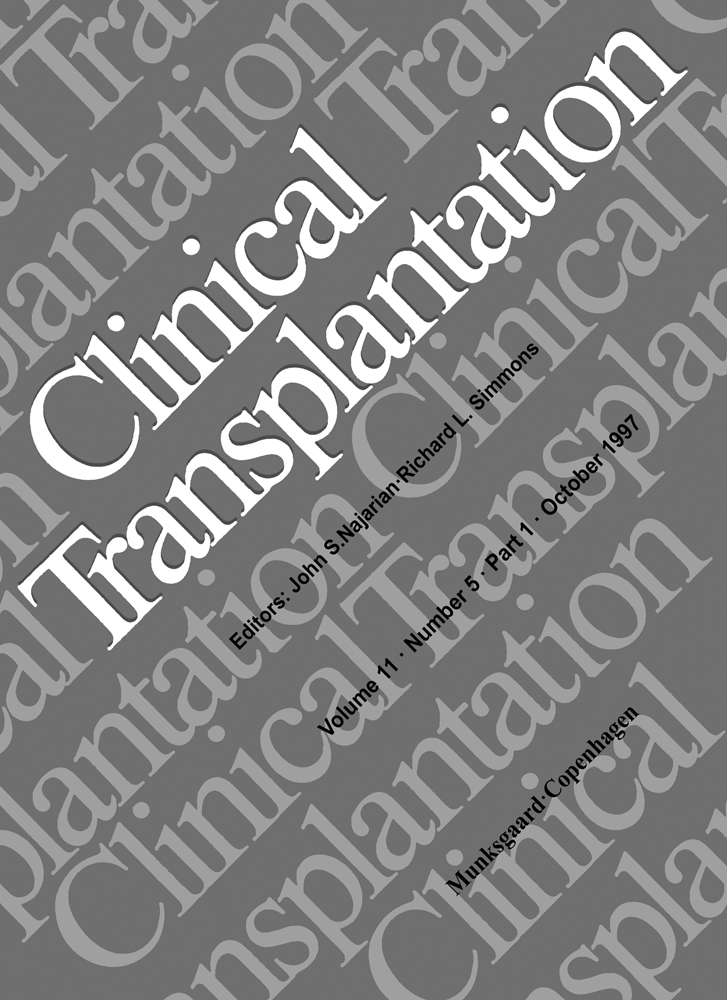Hepatic arterial complications in pediatric segmental liver transplantations from living donors: assessment with color Doppler ultrasonography
Abstract
To investigate the clinical utility of color Doppler ultrasonography in detecting hepatic arterial complications in pediatric living-related liver transplantation, we studied peak systolic velocity (Vp) and pulsatility index (PI) in intrahepatic artery during and after surgery in 122 transplants. Six cases with hepatic artery thrombosis were detected by Doppler studies. In 2 cases with dampened waveforms at intraoperative flowmetry (Vp≤23 and PI≤0.6), thrombosis occurred soon after surgery. A further 2 cases had a rapid decrease in Vp and PI values postoperatively, leading to absence of arterial signals. Follow-up Doppler studies suspected collateral formation after thrombosis in 2 survivors. Normal Doppler waveforms were obtained in all of the 116 cases without arterial complications. Among them, 6 cases had absent signals or dampened waveforms at initial intraoperative flowmetry (Vp≤30 and PI≤0.9), and maneuvers such as re-reanastomosis of the artery improved flow signals with an increase in Vp and PI values. Serial intraand post-operative Doppler examinations are useful for early detection of arterial complications.




